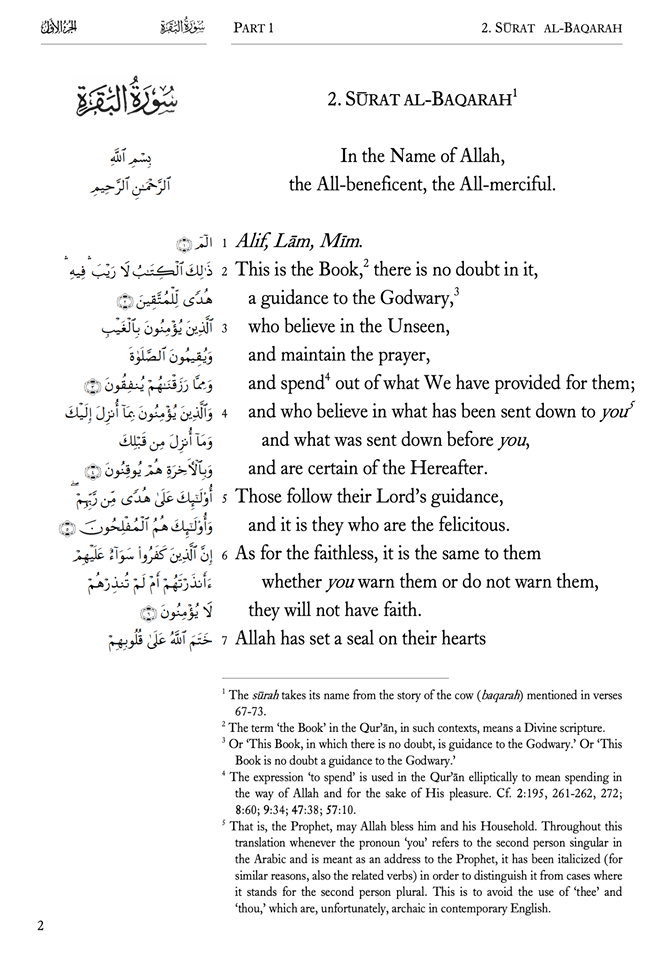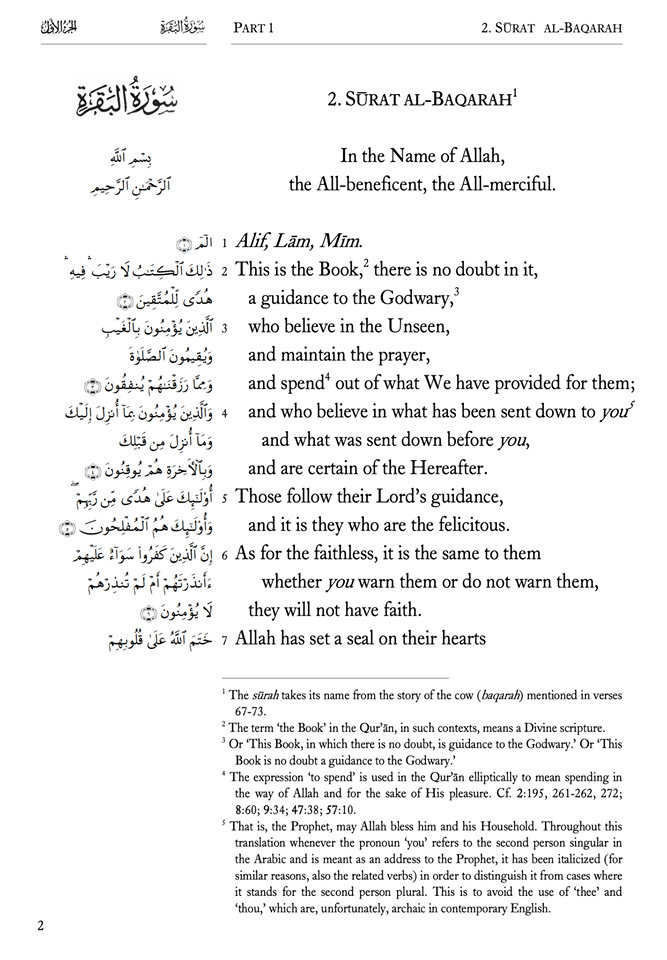This week, we consider another choice of formatting Qur’an translation, particularly into the left-to-right script of the English language: the “phrase-by-phrase” approach adopted by Ali Quli Qara’i.
Born in Hyderabad, India, Qara’i graduated from Osmania University before doing an MBA at the University of Wisconsin. He edited the Al-Tawhid quarterly on Islamic thought from 1983-1997, and produced a number of book-length translations including The Elements of Islamic Metaphysics by Sayyid M.H. Tabataba’i.
surat_al_baqarah.pngQara’i’s translation reflects some specifically Shi’i interpretations of the Qur’an but also draws from Sunni sources. It was first released by the Islamic College for Advanced Studies (London) in 2004 and has seen several editions since then. The work has been received positively by scholars. Gabriel Reynolds selected it to accompany his 2018 study of Biblical parallels, and Qara’i provided a revised text which lacks the key phrase-by-phrase feature.
In his introduction, Qara’i describes the value of interlinear translations in right-to-left scripts such as Persian & Urdu. His “mirror-paraphrasing” approach is intended to provide similar benefit to those who wish to add understanding to their devotional reading of the Arabic. surat_al_baqarah_2.pngAlthough this approach is theoretically and practically challenging, the result is quite effective and of particular benefit to learners of Quranic Arabic. [See attached images from ICAS 2nd edition]
Footnotes are used minimally; occasionally they include alternative interpretations found in the exegetical sources, of which the translator mentions Tabari, Zamakhshari, Razi & Suyuti (among Sunnis) and Tabrisi, Bahrani & Tabataba’i (among Shi’is).
It is interesting to note the evolution of formatting choices to reflect features of the source/target text as well as needs/habits of the users. Evolution will surely continue as human lives became ever more entangled with digital tools.
Sohaib Saeed


